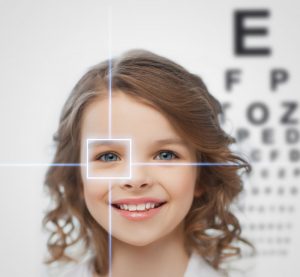 Amblyopia, better known as “Lazy Eye”, is a common eye condition where decreased vision occurs in one or both eyes due to abnormal development of vision in infancy or childhood. In the simplest terms, it is when vision in one of the eyes is reduced because the eye and the brain are not working together correctly.
Amblyopia, better known as “Lazy Eye”, is a common eye condition where decreased vision occurs in one or both eyes due to abnormal development of vision in infancy or childhood. In the simplest terms, it is when vision in one of the eyes is reduced because the eye and the brain are not working together correctly.
Amblyopia affects approximately 2 to 3 out of every 100 children, making it the most common cause of vision impairment or loss among children. It cannot be corrected with glasses, contact lenses or surgery; however, it can be treated with some simple vision therapy techniques. The sooner the amblyopia can be detected and treated, the better the results. If left undiagnosed or treated, the “lazy eye” becomes weak from disuse, which can result in severe vision impairment or even blindness.
There are several types of amblyopia: strabismic, deprivation and refractive. Strabismic amblyopia develops from the misalignment of two eyes, during which one eye may turn in or out, up or down. Deprivation amblyopia results from a cataract, which is a physical obstruction of vision. Refractive amblyopia is caused by the inability of one eye to focus as well as the other (farsightedness or nearsightedness).
Common amblyopia symptoms include:
- Eyestrain
- Poor depth perception
- Squinting, tilting the head or closing one eye to see
Amblyopia not only affects your vision, but the poor depth perception can also cause one to have problems with:
- Hand-eye coordination
- Sports performance
- Driving
- Walking up steps
These problems can be prevented with basic vision therapy. After a child has been diagnosed with a specialized visual acuity test, therapy can begin.
One of the major myths of amblyopia is that it can only be treated up to a certain age. This is a very outdated way of thinking. Yes, it is ideal to treat it sooner rather than later; however, our office successfully treats patients of ALL ages. Vision therapy programs offer much higher cure rates for patients suffering from amblyopia when compared to eye surgery, glasses or patching.
Therapy sessions consist of simple, age appropriate exercises that encourage the eyes to work together with the brain equally. Specialized computer and optical devices including therapeutic lenses, prisms and filters are used in the sessions to strengthen the brain-eye connection of the weaker eye. During the final stages of therapy, the patient’s newly acquired vision skills are reinforced and made automatic through repetition and by integration with motor and cognitive skills.
Vision therapy has helped children succeed in completing schoolwork, reading and playing sports. It has allowed adults to increase their focus and efficiency in the workplace. Overall, it has increased the wellness of patients of all ages, making their day-to-day life much easier. Click here to read some vision therapy success stories.
If you believe you or your child is suffering from amblyopia, please make an appointment with us for a comprehensive vision evaluation. Do not wait for your child to fail a school screening or for symptoms to worsen. Vision For Life has the specialized expertise that helps you be proactive with your family’s eye care. For more information or to schedule an appointment, please contact us today at 618-288-1489.